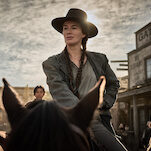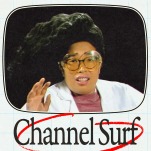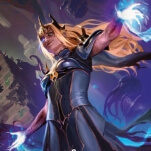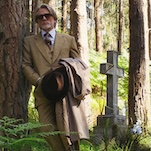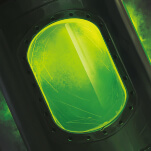On a script level, the French sci-fi/noir hybrid Renaissance doesn't vary much from any other big-budget genre piece. It's got the sullen cop hero, the femme fatale, the corporate conspiracy, the futuristic architecture, and plenty of gunfights and car chases. It's also got enough twists that eventually viewers will have to throw up their hands and just roll with the spectacle. The biggest twist is the film's style. Renaissance has been digitally animated, via a Waking Life-like rotoscoping process that takes real people and makes them into cartoons, and makes familiar action movie conventions seem, if not fresh, then at least a little skewed. Plus, Renaissance is in black-and-white, which abstracts everything further, almost into dreamland. The movie looks like constantly shifting two-tone wallpaper.
Credit director Christian Volckman and his team of technicians for pursuing a fairly risky vision. Images that look as distinctive as those in Renaissance could easily get tiring to the eye over 105 minutes of screen time, but the filmmakers do a lot with their future-Paris, rebuilding the city with layered glass roads and walkways, so that the action has a surreal three-dimensionality. Volckman also comes up with a lot of artful transitions, juxtaposing images with the skill of a great graphic novelist.
The problem comes when these images have to tell a story. Renaissance is meant to be a grimly humanistic mystery, about a kidnapped cosmetics researcher (voiced by Romola Garai) who's close to discovering the secret of eternal life—a secret that may diminish the meaning of all life. Despite fine voice performances by the likes of Daniel Craig (as the cop who tracks Garai down) and Ian Holm (as the shadowy scientist who mentored her), Renaissance's visual approach gets in the way of the characters' expressiveness. Noir movies are as much about actors trading punchy dialogue in dimly lit rooms as they are about pretzel narratives and mood-setting, and Volckman's cartoon heroes and villains simply can't interact in the way that, say, Kirk Douglas and Robert Mitchum did in Out Of The Past.
In the end though, Renaissance's failures as a boffo genre exercise pale next to its achievements as a piece of moving pop art. Any given frame of the movie could be blown up to poster-size and hung on any comic book fan's wall. Packing 151,200 of them into a single film is some kind of wonderment.


